What do you do if COVID-19 has brought your life to a screeching halt and you’re a photographer? You’re certainly not going to any workshops in the next few weeks, nor camera club meetings or sporting events or concerts or… you get the idea. Here are a few things you can still do to scratch that photo itch:
Trapped at home with the entire family? Nothing quiets nerves or strengthens close family ties than a family photo! Seriously, though, it will give everyone a reason to change out of their pajamas and take a shower, and that alone should be enough for you to suggest it. You can do it indoors or out, and here are a few more suggestions from a story I did on this some years ago.
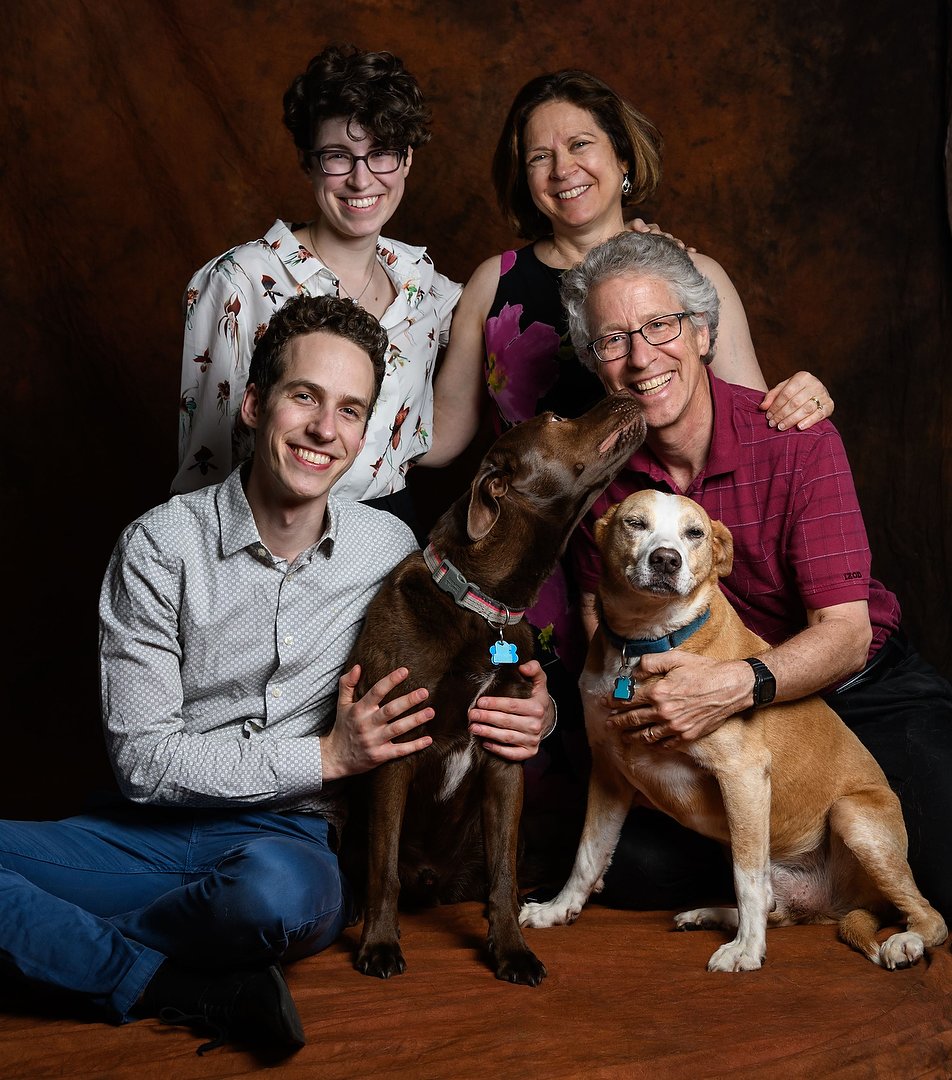
Indoor family photos are also a good way to practice your lighting skills. This was done with two Nikon Speedlights firing into umbrellas, and the camera was triggered by the self-timer. Nikon D850, Manual exposure, ISO 250, 1/160 at f/7.1, Nikkor VR Zoom 24-70mm f/2.8 lens at 42mm.
Most local parks are probably still open, and if you’re allowed outside, then that’s a great opportunity to get some fresh air, exercise and make pictures.
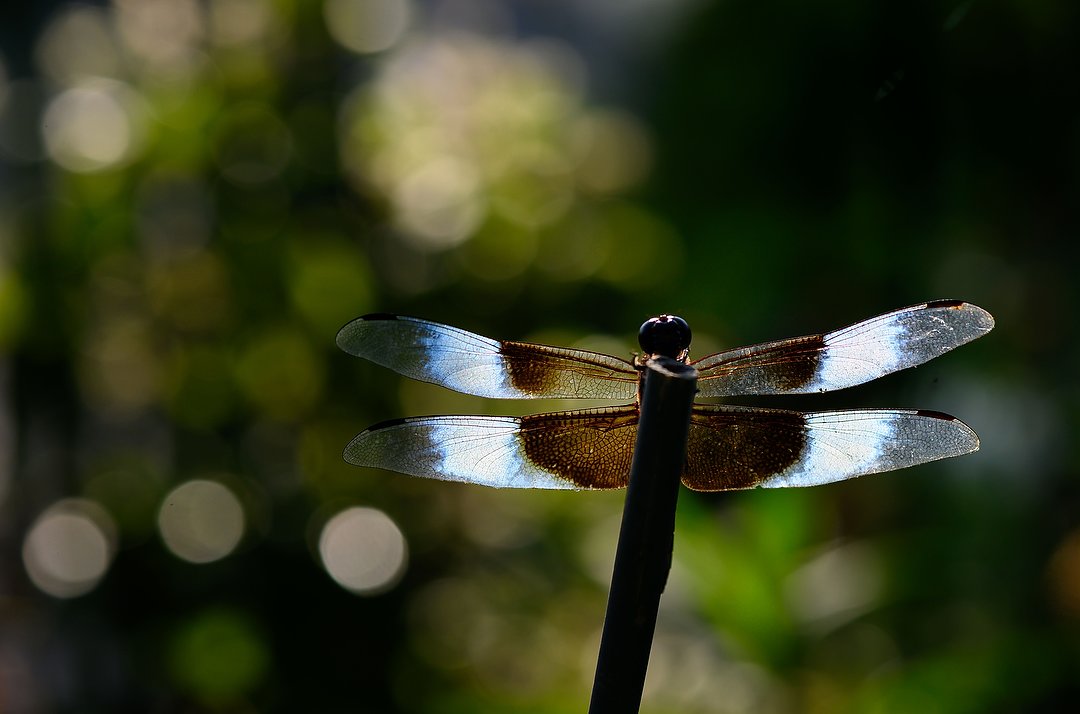
It took me a while to convince this Dragonfly to let me get close at a nearby park, but who doesn’t have time these days? Nikon Z 7, Aperture Priority, Natural Auto white balance, ISO 400, 1/800 at f/8 in Matrix metering, -0.3 EV, Nikkor VR 105mm f/2.8G IF-ED lens.
Got a home studio? Of course you do! All you need is a table and a light source. You’ll discover your house is filled with interesting stuff, especially if you have a macro lens. From kitchen implements to tools to a music CD you no longer care about, there are some nice photos to be made.
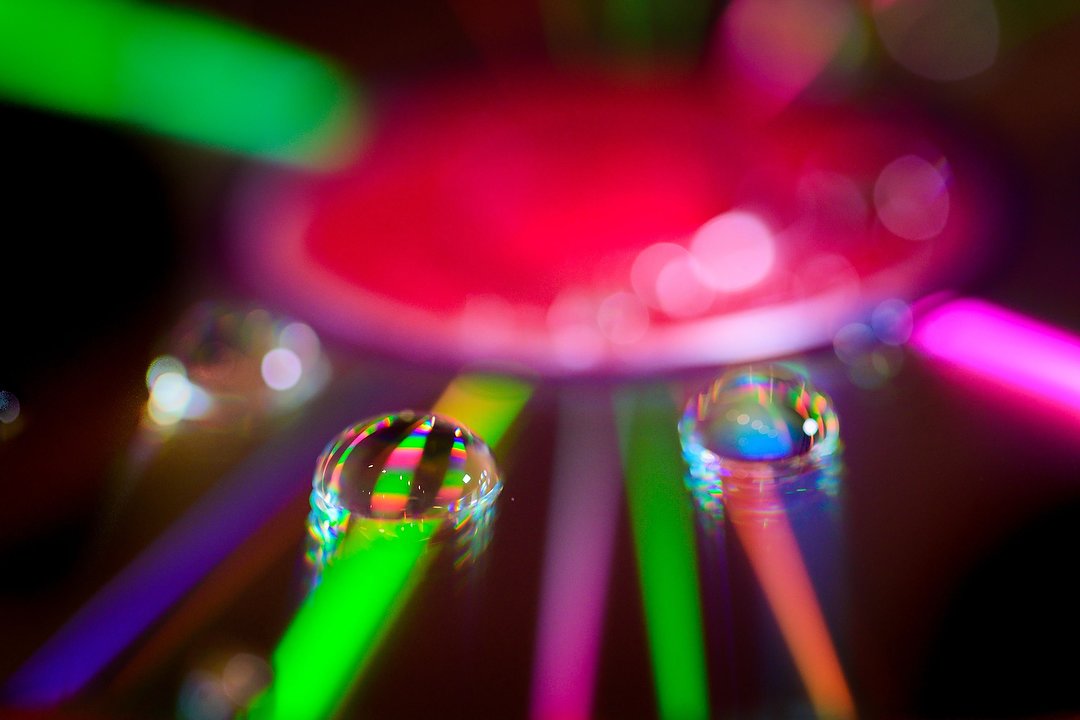
This is simply a CD with some water droplets, an easy shoot to do at home. Of course, you need either a macro lens or extension tubes to get in this close. Nikon Z 7, Aperture Priority, Auto white balance, ISO 1000, 1/40 at f/5.6 in Matrix metering, 0.0 EV, Nikkor VR 105mm f/2.8G IF-ED lens.
Another great thing to try, with any lens, is focus stacking. Again, this is something you can do inside, and better yet, gives you a reason to try out some new software. Adobe Photoshop CS is able to composite a series of images you’ve created via focus stacking, but why not try something new? Being trapped at home is the perfect time to try out new software, and for focus stacking, you should give Helicon Focus a go (plus, it has a free trial period).
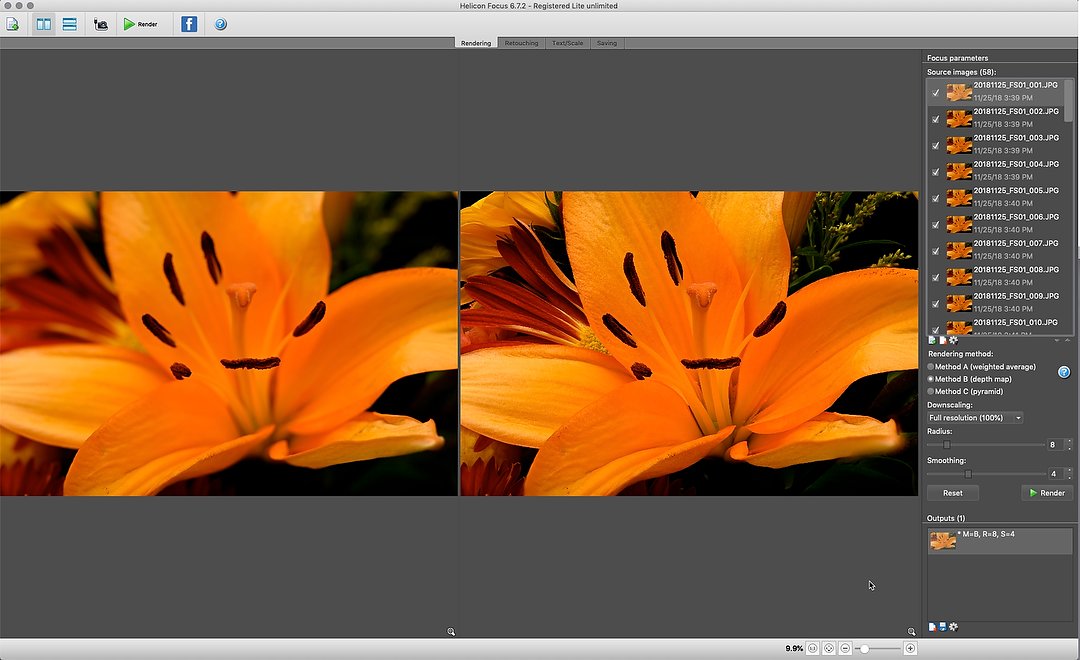
Many of today’s mid-range and up cameras offer some ability to automate focus stacking. In my Nikons that’s called “Focus Shift.” I made this photo in my basement with store-bought flowers, and then used Helicon Focus to assemble the final image. Shot with a Nikon D850 and 105mm Micro lens.
If your local zoo is open, head there. It should be easy enough to keep your distance from other people, and animals are always fun to photograph.
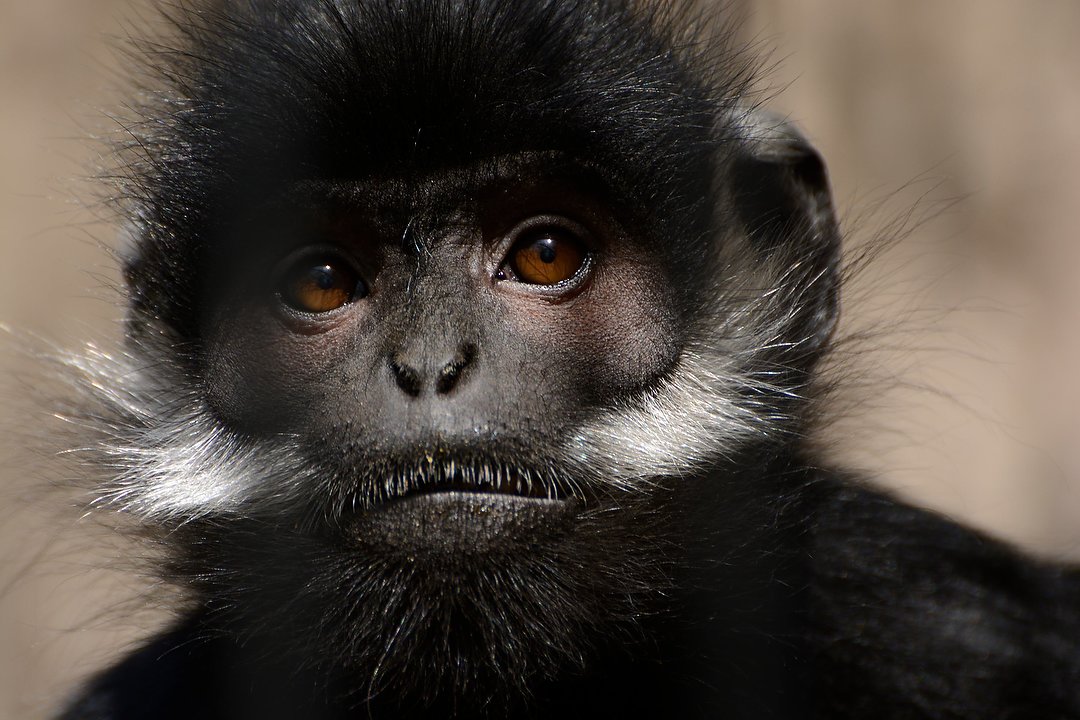
Zoos always offer great photo opportunities, especially if you can find ways to hide the enclosures. In this case I had my telephoto lens close enough to the bars so that they nearly disappeared in the photo. Nikon D5200, white balance Sunny, ISO 200, 1/320 at f/5.6, EV -0.3, Nikkor 70-300mm lens at 300mm.
How about some night photography, or light painting? Getting started with light painting requires only a tripod, flashlight and knowing how to turn on your self-timer. Once you get started, you might want to try your hand at “low-level lighting.” Here are all the stories I’ve written about using light at night.
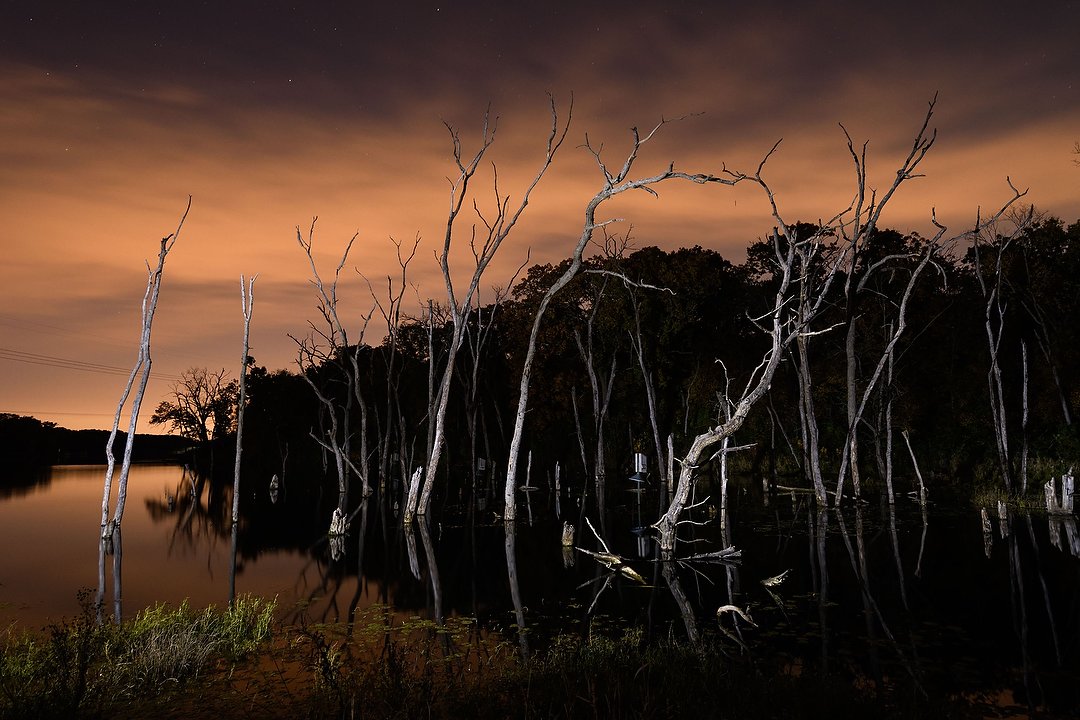
For this photo at a local park, I mounted the camera on a tripod and set the self-timer for twenty seconds. That gave me time to move about 25 yards to the left and “paint” the dead trees with my flashlight. You’ll find that sidelight and backlight create more interesting light than if you simply shine your flashlight from where the camera is. Nikon D7500, Manual exposure, Sunny white balance, ISO 400, 25-seconds at f/5.6, Nikkor 10-24mm lens at 14mm.
On the less sexy side of photo things you can do, when was the last time you really cleaned your camera gear? That means cameras, lenses, filters, tripods, bags, etc. A blower bulb is key here, not just for cleaning the sensor, but for blowing dust off glass surfaces before using lens cleaner and tissue on them. And camera bags are great collectors of dust and dirt. You should occasionally empty them, take them outside and give them a good shaking and beating. Great stress reliever too!
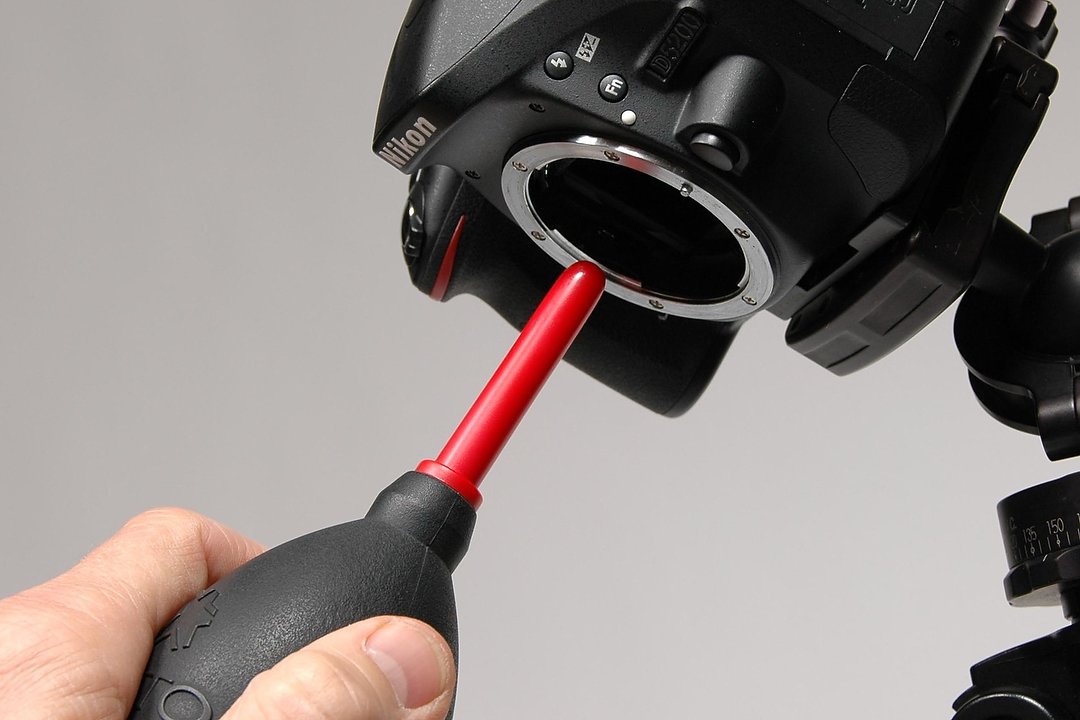
Sensor cleaning with a bulb blower should be a two-step process with a mirrored camera. First, blow out the mirror chamber to get any dust or debris out of there. Then, once that’s done, raise the mirror and open the shutter to blow any dust off the sensor. Most mirrored cameras have a menu option like “Lock mirror up for cleaning” to lift the mirror and open the shutter without charging the sensor. With most mirrorless cameras, the sensor is exposed as soon as you remove the lens. And finally, tilt the camera down when doing this so gravity works in your favor.
Another chore we often put off is getting caught up on archiving. When was the last time you backed up your photos? If you’ve always wanted to do a better job organizing your photos, or start a new system of re-naming, you probably have time now.
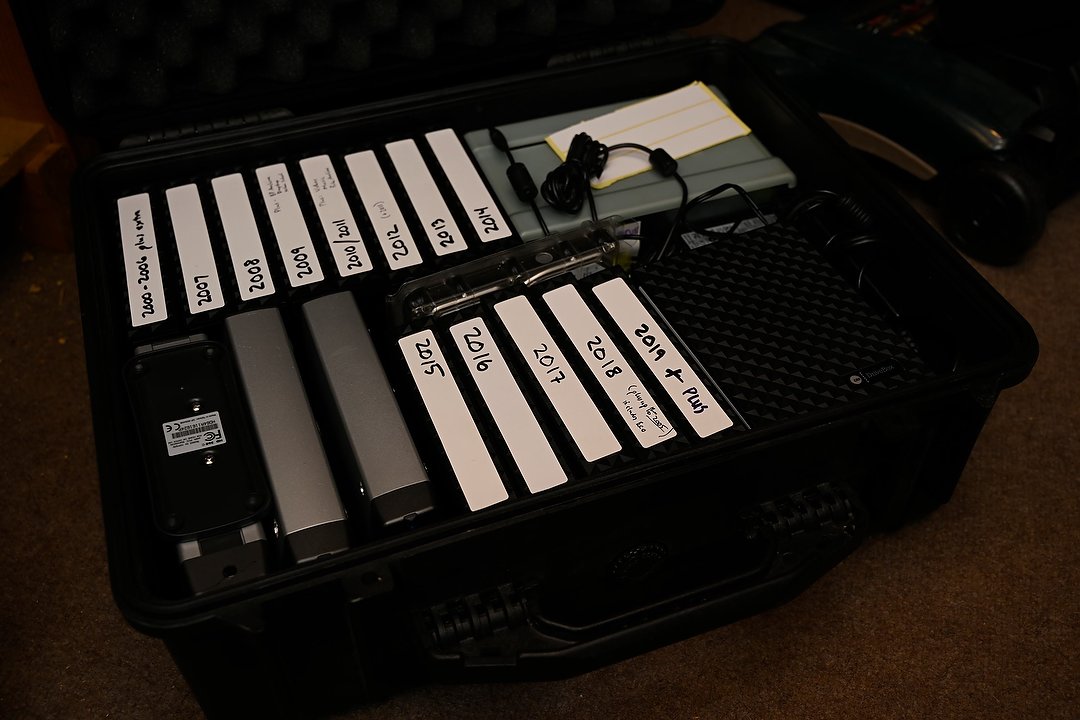
I keep every year’s photos on an individual hard drive (drive only, no case or power supply), packed inside a Pelican case in my basement. Every month or so I get the current one out and update it with the latest photos. Nikon Z 7, Manual exposure, Flash white balance, ISO 400, 1/200 at f/5, Nikkor AF Zoom 24-70mm f/4 lens at 36mm.
Do you have a current list of all your camera gear, including serial numbers, along with when you bought each piece and what it cost? This is something you’ll need if you’re ever the victim of theft. And speaking of that, you should check to make sure your homeowner’s insurance covers your camera gear. There may be a limit, or you might need a rider (extra policy) to cover it all. A quick email to your agent will answer that question.
Finally, what about a little distance learning? There are loads of free tutorials online, so this could be an opportunity to learn some new skills or improve the ones you already have. On my own website, you’ll find nearly two-hundred blog posts, many of them “how-to,” as well as long stories on everything from composition to flash to how to travel as a photographer (“Pro Tips”).
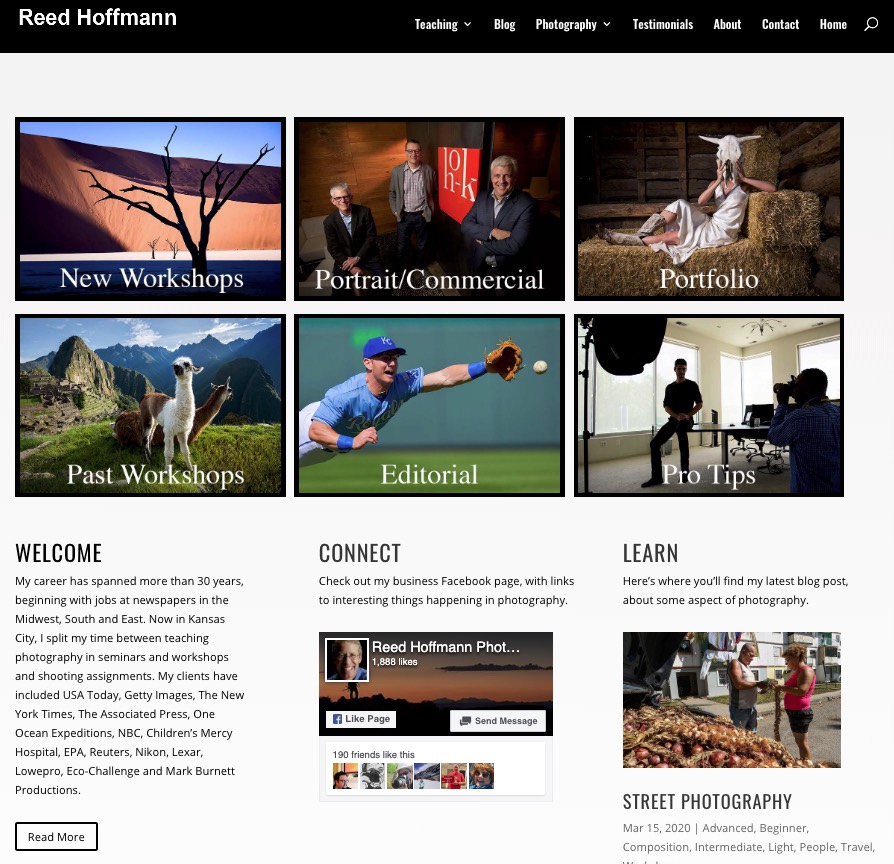
My site is geared mostly towards teaching, so you’ll find lots of stories with “how-to” tips on photography.
Life may have slowed down, but it doesn’t have to come to a complete stop. As a photographer, this can be an opportunity to improve some of your skills. You just need to pick an area (or two) and focus on it. Pun intended!
(If you like this story, please share it with your friends and let them know about the links on photography that I post on my business Facebook page. I’m also on Instagram and Twitter, @reedhoffmann. And if you’re curious about the workshops I teach, you can find them here.)

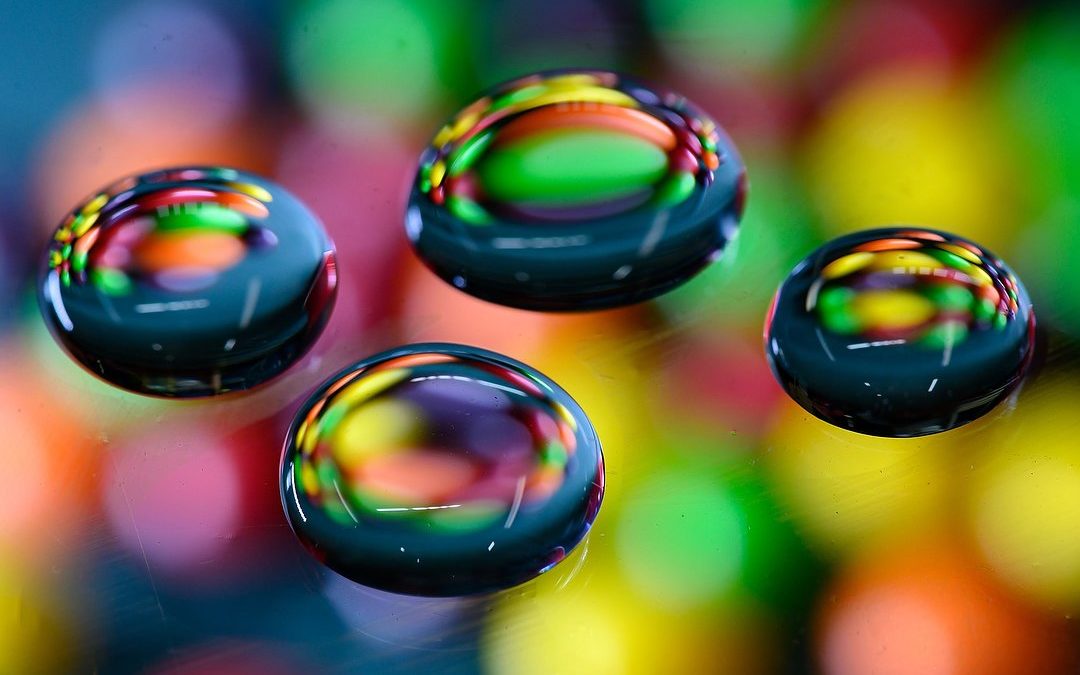
Great tips Reed! Nice that spring seems to be here & flowers will be blooming…makes back porch photography fun!…In the meantime I’m enjoying reviewing & posting old photos on FB that hopefully will add some `light’ to this very strange time!
Thanks, Reed! I’m going to brush up on my photography skills so I’m ready for the next adventure. Stay safe, Reed, and hope to have the opportunity to see you soon!
Yes, fingers crossed that by mid-May we can travel again!
Reed, Great ideas. I have some construction projects going on up here that I have taken over the inspection duties. Gets me out of the house and I find all kinds of things to photograph. You have given me some other ideas what to do with all of this found time.
Yes, I have a feeling we’re all going to need to find things to occupy our time for a while…
Hi Reed, thanks for your great advice. My camera is saving me from boredom.
They’re good at that, aren’t they?
Nice story